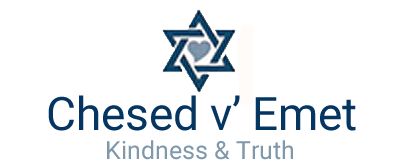Respect is always shown to the deceased as well as towards the mourners. This is one of the reasons why Traditional Jewish funerals are held so soon after death. It is more respectful to inter the body in a reasonable amount of time, rather than having an unnecessary delay. Of course, waiting for relatives to come from a distance is a respectful reason to delay the burial. This is a decision the family should make in consultation with their rabbi.
Viewing the deceased is not typically a Jewish custom and Tradition teaches us that it is disrespectful to look at a person who can not look back. Therefore, a Traditional funeral would be one in which the casket is kept closed and there is no viewing, except for purposes of identification by the family. Unless local laws require, embalming, a chemical process of sanitation and temporary preservation, should be avoided. We will advise you if any laws apply that would make embalming necessary.
If the family wishes, Chesed v’Emet will contact the Chevra Kadisha. The Chevra Kadisha, the sacred society, is a group of pious men and women who have taken on the obligation of ritually preparing the deceased. They perform the Taharah, which means purification. These people ritually bathe the deceased and then dress the person in Tachrichim, shrouds, the Traditional burial garments. (Male members of the Chevra Kadisha prepare the male deceased and female members of the Chevra Kadisha prepare the female deceased.) Usually made of white, pure linen, the Tachrichim symbolize that we are all equal in death. The simple white garment without pockets is physical proof that we take nothing with us when we leave this world and that God judges us on our merits and deeds, not the material wealth we have accumulated.
Tradition calls for a wooden casket, made without metal parts. Chesed v’Emet has Traditional caskets ranging from unfinished pine to solid plank mahogany. This again, is something the family will decide on privately and can rest assured that any casket they select will be the appropriate for their needs.
Funerals usually last about thirty minutes and consist of the recitation of psalms, readings and a eulogy. Prior to or after the services, the mourners perform the ritual of k’riah, rending of the garments. This ancient custom is symbolic of the tear that is in the mourner’s heart. Traditionally the clothing is torn, but many people today use a black ribbon that is attached to the outside of the clothing. When people see the ribbon or the tear in the clothing, they immediately know the person is a mourner. They should greet the mourner and act in an appropriate manner.
The ribbon is worn, or the clothing cut, on the left side of the body if they are mourning the death of a parent. For all other Kaddish relatives, the ribbon or clothing is cut on the person’s right side. This is to acknowledge that the relationship with a parent is different and therefore we observe the difference by performing the K’riah on the side closest to the heart. When we see a person wearing the ribbon, or torn clothes, we should offer our condolences to the mourner, even if we don’t know the mourner, or who they are mourning. Many mourners are uncomfortable with their “status” as a mourner and are already feeling isolated. When we see a person wearing a K’riah ribbon, we should approach the mourner so they do not feel more isolated and alone in their time of grief.
A special prayer is said when the clothing or ribbon is cut. …Dayan Ha’emet, … “Blessed is the Judge of Truth.” This is said because we, as mortals, can not understand, God’s decrees and judgments. Rather, all we can do is accept those judgments and to acknowledge that God is in control of all life. The ribbon or torn clothing is worn traditionally for seven days, except on Shabbat. When mourning the death of a parent, the ribbon or torn clothing is traditionally worn for thirty days.
As with Shiva, some festivals and Holidays affect the observance and practice of the K’riah and it is important you speak with your rabbi for the interpretations as they affect your individual set of circumstances.

